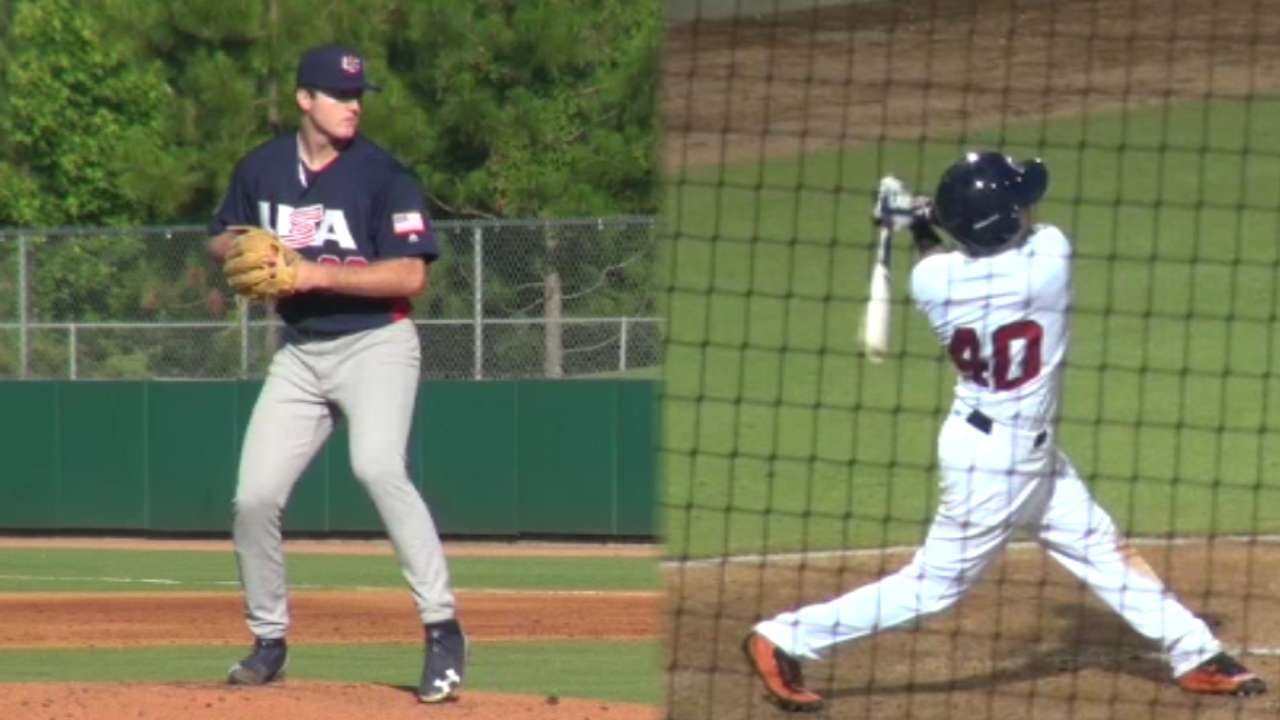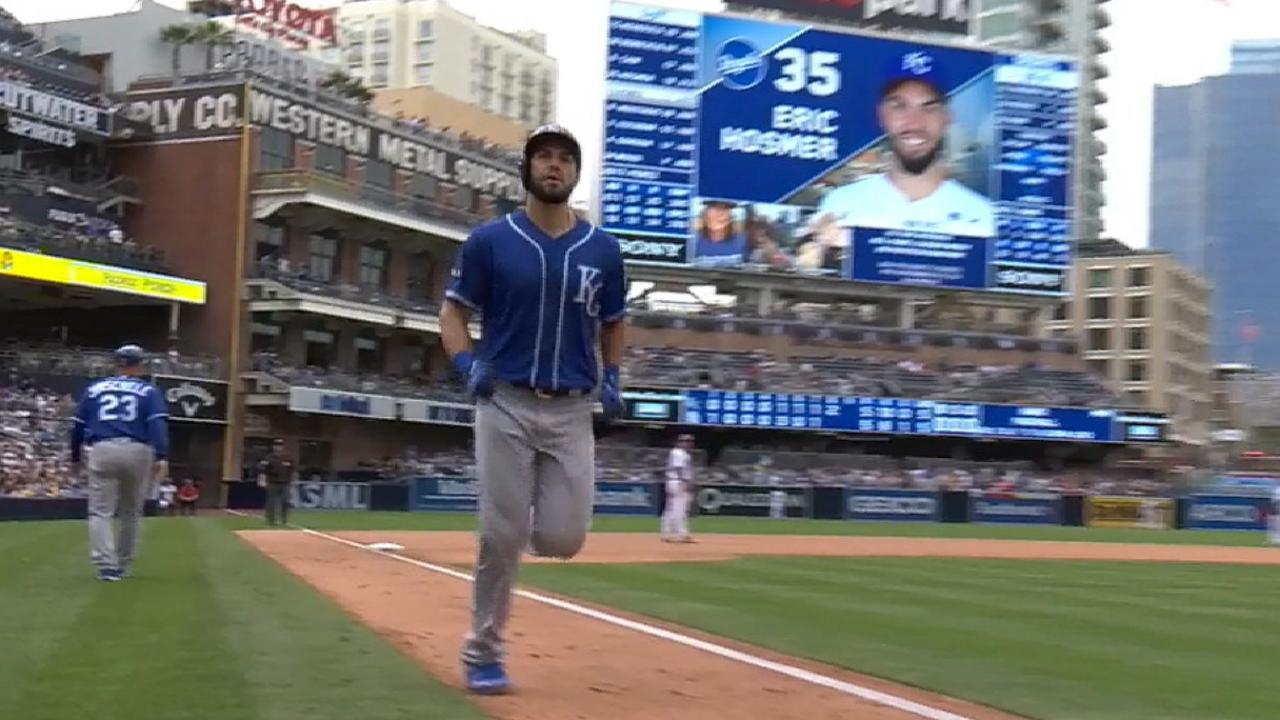Draft Proves To Be Gut-Punch For Seniors
Logan Ratledge's draft experience focused on teams assessing his price tag, not his talent. (Photo by Brian Westerholt)
Everyone knows baseball is a business.
North Carolina State infielder Logan Ratledge discovered the full extent of it, however, particularly for a college senior going through the current draft system.
Seniors have always been considered budget-minded draft picks because they have no amateur leverage left; it's pro ball or nothing. But they have become essential commodities under the new draft rules, a way for teams to stretch their draft signing budgets. Signing a senior for $5,000 when his draft slot is valued at, say, $160,000, yields a savings of $155,000 that can be applied elsewhere. And the savings add up with more seniors.
A few clubs took this approach in 2012, the first draft held under the new rules. The process has been refined since then and many more clubs have adopted it, especially when they draft players considered tough signs higher in the draft.
Seniors know the system, but even if they've been drafted before, it's hard to be prepared for the process. It's a process that sees the players simply as assets, and as a result, the players are often treated poorly.
Coming off a fall shoulder injury, Ratledge had controlled his controllables all spring. Two-thirds of the way through the season the 5-foot-11, 192-pounder moved over from second base to shortstop, defending capably and helping push the Wolfpack to a strong finish.
He finished the year batting .329/.431/.558 with 10 homers and 11 stolen bases, leading the team in all those categories.
"It was the most fun team I've ever been a part of, and I've been part of an Omaha team," said Ratledge, a three-year teammate of 2014 first-rounders
Carlos Rodon and
Trea Turner and a starter for the 2013 Pack team that reached the College World Series. "We had so many guys who were really, really hungry. We had a lot of competition all year long, starting in the fall, and it paid off. We had great relationships and friendships, so the way it ended really hurt."
Ratledge's college career ended in an excruciating 9-8 loss in the Fort Worth regional when the Pack blew an 8-1 lead to Texas Christian. He returned to North Carolina, then home to Charlotte, to await the draft.
Names Have Been Changed
To tell the story, we have left out the names of the organizations involved because honestly it could have been any of 30 teams. It also could have been any of scores of college seniors, but I know Ratledge, and this is his story.
The draft started to get weird on the second day, which spanned rounds three through 10. Prior to the start of the third round, one team called and asked if Ratledge would sign for $100,000, which would have been a savings of more than $500,000 against its bonus pool. The same club did the same thing in the fourth round. Both times, Ratledge was ready to sign but both times the club chose a different player (not a senior).
Ratledge and his agent fielded calls all day. Ratledge remembers one offer in the sixth round, then two in what turned into a crazy ninth round. Seniors were coming off the board fast and furious; 14 in all were selected among the ninth round's 30 selections.
One club offered $10,000, but Ratledge declined. A second club offered $20,000, which Ratledge said he would accept. But as the pick approached, an official from a third club called with an offer.
"(They) said they'd be able to give me a $100,000 bonus," Ratledge said, "but I'd have to tell teams not to draft me the rest of the day." So Ratledge called to ask the club offering $20,000—let's call it Team B—not to select him.
Team B wasn't happy; it had to find a new senior to save money, but the area scout had a plan in place and found one. Ratledge, though, had to wait a nervous night until the next day. The 11th round came and went, and the third team didn't draft him. The same thing happened in the 12th; still no pick, and no $100,000 bonus. Ratledge says his nerves were shot. He was ready to just get it over with.
"I 100 percent believed they were going to take me, but they kept passing and passing," he said. "I was expecting it wouldn't be easy, and I know it's a business, but I wasn't expecting it to be so cutthroat."
Ratledge told his agent to just go ahead and tell any team to draft him. The Pirates snapped up Ratledge in the 13th round and quickly signed him for all of $5,000.
The way Ratledge figures it, at least he was drafted; teammate Bubby Riley, who was playing his best ball at the end of the year, wasn't selected. Ratledge reported to the Pirates complex in Bradenton, Fla., for his physical and awaited his first pro assignment.
Baseball can be cruel. Ratledge found that out at the end of the college season and as his pro career began. But it doesn't have to be. The current draft rules make it imperative that teams find college seniors and basically exploit their dreams of playing pro ball so they can extend their budgets for other players.
The system makes sense when you consider the bonus slots as assets. It doesn't when you consider them as people.

/cdn.vox-cdn.com/uploads/chorus_image/image/59104705/Spring_Prospect_ish_Roundup_Logo.0.png)




